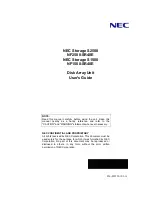
Parameters
Parameter
Description
performanceReadCache
The alphanumeric identifier (including - and _) of the
Performance Read Cache to which you want to add
SSDs. Enclose the identifier in square brackets ([ ]). If the
Performance Read Cache name contains special
characters or consists only of numbers, you also must
enclose the identifier in double quotation marks (" ")
inside square brackets.
addDrives
The drives that you want to add to the Performance
Read Cache. For high-capacity drive enclosures, specify
the enclosure ID value, the drawer ID value, and the slot
ID value for each SSD that you want to add. For
low-capacity drive enclosures, specify the enclosure ID
value and the slot ID value for each SSD that you want
to add.
v
Enclosure ID values are
0
to
99
v
Drawer ID values are
1
to
5
v
Slot ID values are
1
to
32
Enclose the enclosure ID values, the drawer ID values,
and the slot ID values in parentheses.
Note:
The Performance Read Cache can contain any number of SSDs. The maximum size of the
Performance Read Cache is 5 TB, but might be less depending on the size of the controller’s primary
cache.
Minimum Firmware Level
7.84
Autoconfigure Storage Subsystem
This command automatically configures a storage subsystem. Before you enter the
autoConfigure
storageSubsystem
command, run the
show storageSubsystem autoConfiguration
command. The
show
storageSubsystem autoConfiguration
command returns configuration information in the form of a list of
valid disk drive types, RAID levels, logical drive information, and hot spare information. (This list
corresponds to the parameters for the
autoConfigure storageSubsystem
command.) The controllers audit
the storage subsystem and then determine the highest RAID level that the storage subsystem can support
and the most efficient logical drive definition for the RAID level. If the configuration that is described by
the returned list is acceptable, you can enter the
autoConfigure storageSubsystem
command without any
parameters. If you want to modify the configuration, you can change the parameters to meet your
configuration requirements. You can change a single parameter or all of the parameters. After you enter
the
autoConfigure storageSubsystem
command, the controllers set up the storage subsystem by using
either the default parameters or those you selected.
Syntax
autoConfigure storageSubsystem
[driveType=(fibre | SATA | SAS |)
raidLevel=(0 | 1 | 3 | 5 | 6)
subsystemWidth=
numberOfDrives
subsystemCount=
numberOfsubsystems
logicalDrivesPersubsystemCount=
numberOfLogicalDrivesPersubsystem
3-42
IBM System Storage DS3000, DS4000, and DS5000: Command Line Interface and Script Commands Programming Guide
Summary of Contents for System Storage DS3000
Page 599: ...Appendix A Examples of information returned by the show commands A 3...
Page 601: ...Appendix A Examples of information returned by the show commands A 5...
Page 603: ...Appendix A Examples of information returned by the show commands A 7...
Page 605: ...Appendix A Examples of information returned by the show commands A 9...
Page 607: ...Appendix A Examples of information returned by the show commands A 11...
Page 609: ...Appendix A Examples of information returned by the show commands A 13...
Page 611: ...Appendix A Examples of information returned by the show commands A 15...
Page 623: ...Appendix A Examples of information returned by the show commands A 27...
Page 625: ...Appendix A Examples of information returned by the show commands A 29...
Page 627: ...Appendix A Examples of information returned by the show commands A 31...
Page 651: ......
Page 652: ...Part Number 00W1466 Printed in USA GA32 0961 05 1P P N 00W1466...
















































